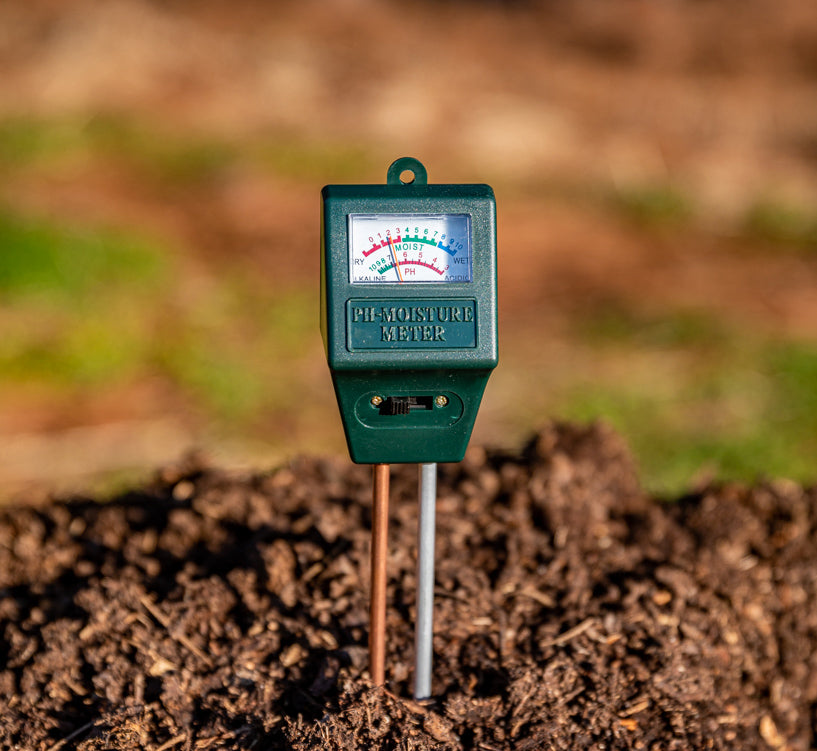
Spring and summer are—for most of us—the busy times for our gardens. Flowers bloom, vegetables thrive, and we devote a great deal of time and energy both to helping them along and to enjoying them. As the weather changes and the leaves fall, autumn may put an end to the bounty offered by the warmer months. While we’ve talked about fall and winter gardening in the past—and will do so again soon—sometimes you may need to let some of your beds or container lay fallow over the cooler seasons. In keeping with the spirit of Gardzen, we try to use these times as an opportunity to keep gardening and to learn more about how our gardens work. A wonderful way of doing this is to explore the ins and outs of soil and soil amendments. The quiet months in the garden are a great chance to keep the soil healthy by caring for it in various ways. Let’s dig in!
The first step in building soil health is to understand what it is you’re working with. While we encourage you to test your soil at the beginning of the season and add fertilizer or compost accordingly, it helps to do so at the end of the growing season as well. Your plants may have changed the chemistry of the soil as the extract some nutrients and add others elements, and it’s good to know what’s going on. Many county agricultural extensions in the US offer free or low-cost soil testing which can tell you a great deal. A simple pH test can be done at home easily, and is a great guide to amending your soil.

Another factor to consider is soil density. Soil often compacts over the course of a growing season due to the effects of rain, gravity, garden work, and other factors. Evaluating the density of your garden soil is a combination of experience, understanding, and a good deal of poking around. Use this as another chance to both check your soil’s density and to pull weeds, remove debris, and in general spruce things up.
So, once you know what your soil needs, what can you do about it. Different soil considerations require different fixes, but a good general approach is this:
- Aerate and loosen the soil as needed, using either a garden fork or other aeration tool. This helps the soil recover from the compaction it received over the previous growing season and prepares it for any amendments you’ll be adding.
- Add the amendments you need, depending on the results of your soil testing. A good compost can add nutrition and organic matter, while the right fertilizer can correct for any deficiencies revealed by your testing. Straw, sphagnum moss, or other plant matter can lighten up dense soil while working as a compost of sorts—the winter season gives them time to break down and decompose.
- Correcting the pH of your garden soil takes a bit more precision. Most plants prefer a soil pH between 6.0 and 7.0, but some plants—like blueberries and azaleas—prefer a more acidic soil with a pH between 4.5 and 5.2. If you need to raise your soil pH, agricultural limestone is the most commonly used additive and widely available at most garden supply stores. To lower your pH, you can add elemental sulfur, also widely available. Pine needles are often used to naturally acidify soil, but they give mixed results and may take longer. Whatever product you use, follow the manufacture’s directions carefully for best results!
- When you’ve figured out what combination of compost, fertilizer, and other additives you want to use, turn them into your soil much as you did while aerating it. Spread your soil evenly to prevent furrowing or puddling. At this point, you can add a layer of mulch to help protect your soil and encourage natural organic process which break down organic matter and increase nutrition over the winter.
After you’ve amended your soil, take a moment and reflect on the season past and the season to come. You’ve prepped your soil for best success, helping to ensure that your plants will thrive in the spring to come. There’s always more to do in the garden, and we hope you’ll find ways to make this winter both productive and rewarding.

Leave a comment